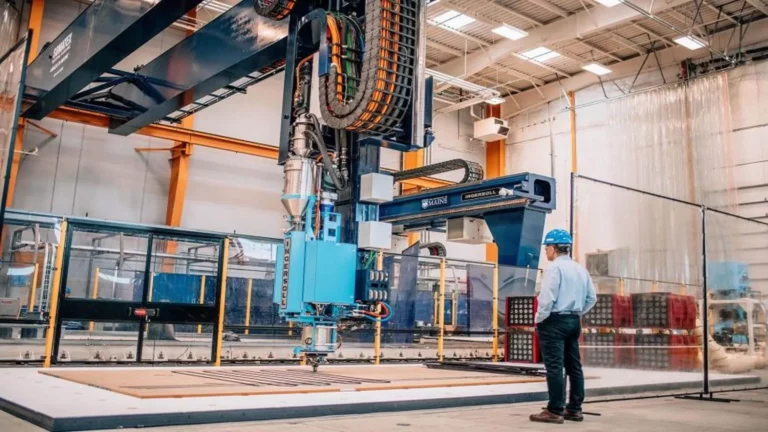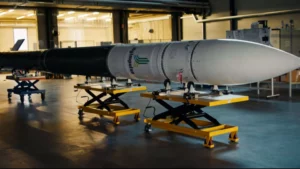The University of Maine (UMaine) has surpassed its own 2019 Guinness World Record with the launch of a new 3D printer called Factory of the Future 1.0 (FoF 1.0), which is four times larger than its predecessor.
This advance was presented at the Advanced Structures and Composites Center (ASCC) on April 23, with the presence of prominent representatives from several US government departments and industrial partners interested in applying this technology.
FoF 1.0: 3D printer for advanced manufacturing
The FoF 1.0, which uses thermoplastic polymer, can print objects up to 96 feet long, 32 feet wide and 18 feet high and is capable of printing up to 500 pounds per hour . This development offers new possibilities for sustainable manufacturing in critical sectors such as national security, affordable housing, infrastructure construction and maritime production, among others.





The design and manufacturing of this printer and its hybrid manufacturing system have been made possible with support from the US Army Corps of Engineers.
U.S. Senator Susan Collins has praised UMaine and the ASCC for their ability to meet the Department of Defense’s advanced manufacturing needs , highlighting the center’s importance to national security. The senator has been instrumental in securing more than $93 million to support this initiative and other advocacy projects at the ASCC since fiscal year 2022.
For his part, Habib Dagher, executive director of ASCC, highlighted that FoF 1.0 not only expands the frontiers of research in collaborative robotics and manufacturing, but also integrates sensor technologies, high-performance computing and artificial intelligence to create systems of high quality.
The FoF 1.0 printer, along with the MasterPrint, another ASCC pioneering 3D printer, is set to revolutionize manufacturing, enabling use of bio-based raw materials, such as the abundant wood waste in Maine, to promote projects like BioHome3D and the construction of sustainable and affordable housing.
It is important to note that FoF 1.0, in addition to reflecting a technological advance in 3D printing, signals a change in the sustainability strategy, by linking technological innovation with the use of local and biodegradable resources. This approach can offer a renewed avenue to address global crises such as climate change and housing shortages, while boosting the local economy by creating jobs and developing new skills in the workforce.
Follow us on social networks and don’t miss any of our publications!
Inspenet.com YouTube LinkedIn Facebook Instagram X
Source and photo: umaine.edu













